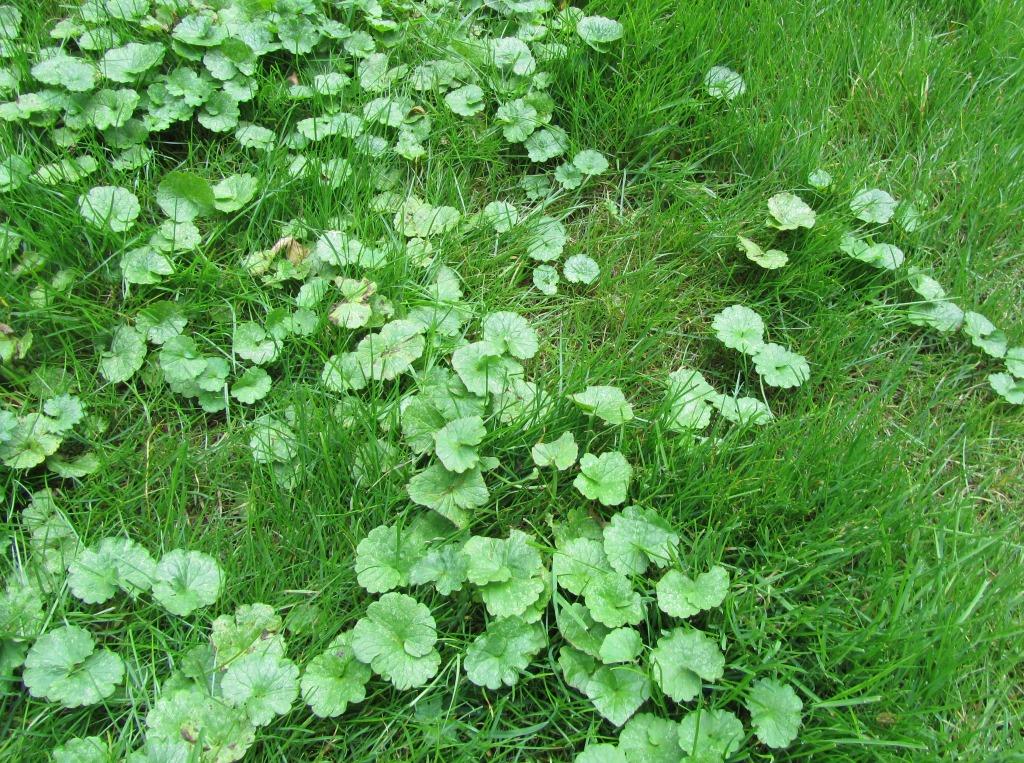Before we crawl, let’s be clear that Creeping Charlie is a plant that creeps along the earth popping up small vines that reach for the sky, and not some guy. This story or blog as they like to call them is part of a series of stories that I will share as part of my foraging escapades.
Another name for Creeping Charlie is simply ‘Ground Ivy’ (others: Field Balm, Gill Over The Ground, Runaway Robin) which heralds from the mint family Lamiaceae and is also referred to as Glechoma hederacea L. (Labiatae) in studies. It sure tastes like mint and creeps like mint. Like most plants, Creeping Charlie also produces flowers that help spread the seeds of this helpful healing plant throughout many a lawn. The creeping is sure to be the easiest way to spread far and wide and in every inch of empty garden space. Consider this herb to replace your grass…and sing tiptoe through the Charlie!

Creeping Charlie or Ground Ivy (Toronto 2016) Photo by Moi (Iridology Camera Macro Lens)
A Resilient Springtime Herb
In 2016, I only admired the plant with the tiny beautiful purple flowers in my garden (photo). In 2022, I looked up its name and uses, and said to myself “this is something special.” Early in the Spring, the plant takes off and pokes its branches from the ground before you need to cut the grass. As if they say, look at me, pluck me, and consume me for my healing energy.
Use leaves fresh or dried. Besides just eating a freshly plucked leaf one can add the leaves to salads and use the herb to flavour foods. The leaves can be made into tea, and top of mind, the tea will help remove the heavy metals from the body. While the plant was in its prime, I harvested enough to dry in my dehydrator for tea until next Spring. The question of being seasonal makes me contemplate whether Spring time is a grand time to drink this fresh herb for its healing benefits.
Lo and behold a clue! Springtime is a good time to cleanse the kidneys and herbalists mention its benefits to our digestion and kidneys, more specifically kidney complaints.
Creeping Charlie Uses
In my research, other benefits include helping with (but not limited to):
- bruises (stop bleeding)
- sciatica
- ringing in the ears (tinnitus)
- colds, coughs, mild lung conditions, and bronchitis
- skin problems (Irish) including hives and ulcers
- measles
- regulating menstrual cycles (Chinese)
- arthritis (Italians) and joint issues
- corns (Argentinians)
- chest pains (Norweigans)
- bladder infections and bladder stones
- hemorrhoids
- joint and muscle pain (rheumatism)
- kidney stones
- stomach issues
When I peruse the above list, there is a wide range of symptoms that it helps with from digestive to respiratory to immune/lymphatic to urinary to the skin to reproductive to cardiovascular to neurological to hormonal/endocrine to muscular to inflammation. Quite the list. Why do all of these symptoms exist in the first place? Have you read the book All Guts All Glory, Discover the Root Causes of Disease?
 One last mention as to what the herbalists identify its uses. Herbalists classify Creeping Charlie in these categories: antiviral, expectorant, diuretic, diaphoretic, anti-inflammatory, anodyne, digestive, anticatarrhal, antidepressant, anti-spasmodic, antiulcerogenic, tonic, astringent, carminative, decongestant, nervine, and vulnerary. My six-month intensive herbal course tells me this is a big list! Impressed? I am. But it doesn’t end there, studies show Creeping Charlie is anti-cancer and anti-microbial. Since the Ground Ivy is part of the mint family, I wonder if mints come anywhere close in the number of uses?
One last mention as to what the herbalists identify its uses. Herbalists classify Creeping Charlie in these categories: antiviral, expectorant, diuretic, diaphoretic, anti-inflammatory, anodyne, digestive, anticatarrhal, antidepressant, anti-spasmodic, antiulcerogenic, tonic, astringent, carminative, decongestant, nervine, and vulnerary. My six-month intensive herbal course tells me this is a big list! Impressed? I am. But it doesn’t end there, studies show Creeping Charlie is anti-cancer and anti-microbial. Since the Ground Ivy is part of the mint family, I wonder if mints come anywhere close in the number of uses?
Nutritional Value
According to this study, Creeping Charlie or Ground Ivy has these nutritional values:
Results regarding nutritive analyses, conducted using standard AOAC methods, showed the abundance of samples in terms of insoluble dietary fibre, protein, calcium and potassium, while rutin, chlorogenic, cryptochlorogenic, caffeic and rosmarinic acid were the most dominant phenolic compounds. (Ref)
Others indicate it is high in Vitamin C and was brought to North America to prevent scurvy. Step aside limes!
From Ancient Greece to my front yard to our mouths!
How to Consume Creeping Charlie / Ground Ivy
This herb can be consumed as tea (fresh or dried leaves), a tincture (alcohol), or even a juice. Ground Ivy could be mixed with other herbs.
With any herbal and folk medicine, consume in quantities as recommended or enjoy a cup of this brew as you would a daily cup of tea. The usual is to put 1 tsp dried leaves to make one cup of tea. Use 1.5 to 2x as many leaves if using fresh leaves.
Look down! Drink up!
Also, learn about Chaga tea.
Reference Links:
https://www.ncbi.nlm.nih.gov/pmc/articles/PMC8909519/
https://www.rxlist.com/ground_ivy/supplements.htm
***







